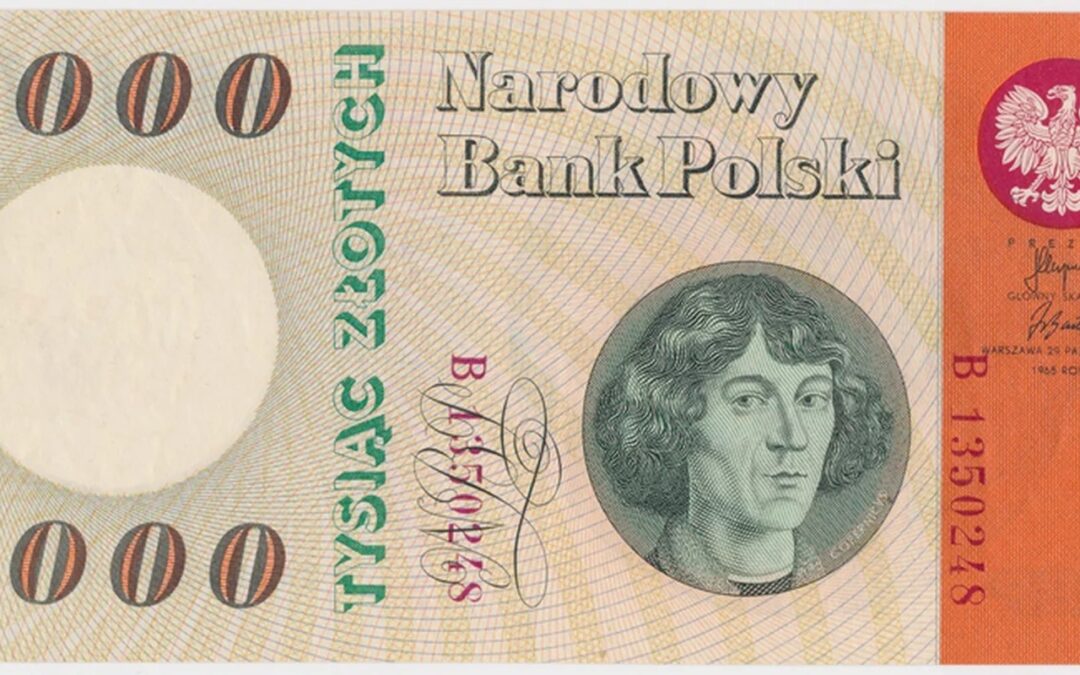The head of Poland’s central bank (NBP) has announced that he is hoping to introduce a 1,000 zloty note (worth €220/US$266/£196). Adam Glapiński says this would make it easier for the NBP to store its cash reserves as well as for people to keep money in “underwear drawers” at home.
Such a move would go against an international trend of countries withdrawing high-value notes from circulation due to concerns that they make it easier for criminals to move money around. Glapiński oversaw the introduction of Poland’s current highest-value bank note, 500 zloty, in 2017.
“I think that the next president [of the NBP] will introduce a 1,000 zloty note,” said Glapiński, speaking on Friday. He added that he hoped this next president would be him, should he be re-elected for a second and final term once his current one expires in June 2022.
“It is just convenient to assemble a reserve in it,” continued the central bank chief, quoted by Bankier.pl, a financial and business news website. “The central bank has limited storage capacity – we can’t keep all reserves in 5 zloty coins.”
Glapiński also claimed that the change would help normal people. “If someone hides banknotes in their underwear drawer – [if] they are afraid of what will happen for some reason – it is more convenient to put aside 500 or 1,000 zloty than the same amount in 50 zloty notes,” he said.
With current low interest rates and the uncertainty of the pandemic, Poles have been withdrawing more cash. Demand for 500 zloty notes increased significantly in 2020, notes Bankier.pl.
With the rise of the second wave of the coronavirus in October, Poles withdrew almost 7.9 billion zloty (€1.75 billion) more than in the previous month – the largest increase since an even larger leap in April, the first full month of lockdown.
However, Poland’s moves towards introducing higher-value notes go against the trend of other countries specifically moving away from them in order to tackle money laundering and other forms of crime.
In 2019, the European Union stopped producing its 500 euro note. Canada withdraw its $1,000 note in 2000 due to concern that it was used for organised crime.
At the start of this year, Singapore stopped issuing its $1,000 notes, one of the highest-value denominations in circulation anywhere in the world. Its monetary authority said that this was a “a pre-emptive measure to mitigate the higher money laundering and terrorism financing risks associated with large denomination notes”.
S’pore to stop issuing S$1,000 notes as ‘pre-emptive’ move against money laundering, terrorism financing: MAS https://t.co/28c16XM08t pic.twitter.com/mgu7cTNAkA
— TODAY (@TODAYonline) November 3, 2020
Asked about worries that higher-value notes could be used in the black and grey economies, Glapiński said that “this [kind of] business has been using cryptocurrencies for a while” and that “transporting large denominations in suitcases” is a thing of the past.
The central bank chief also defended the earlier decision to reintroduce the 500 zloty banknote, of which there are now 46.5 million in circulation. Glapiński said that it had made it easier for the national lender to manage its cash reserves.
Poland issued 1,000 zloty notes until 1996, at the end of the transition period after Poland’s currency underwent redenomination to fight inflation. The new zloty (PLN) replaced 10,000 old zloty (PLZ).
Main image credit: National Bank of Poland/press materials

Maria Wilczek is deputy editor of Notes from Poland. She is a regular writer for The Times, The Economist and Al Jazeera English, and has also featured in Foreign Policy, Politico Europe, The Spectator and Gazeta Wyborcza.



















